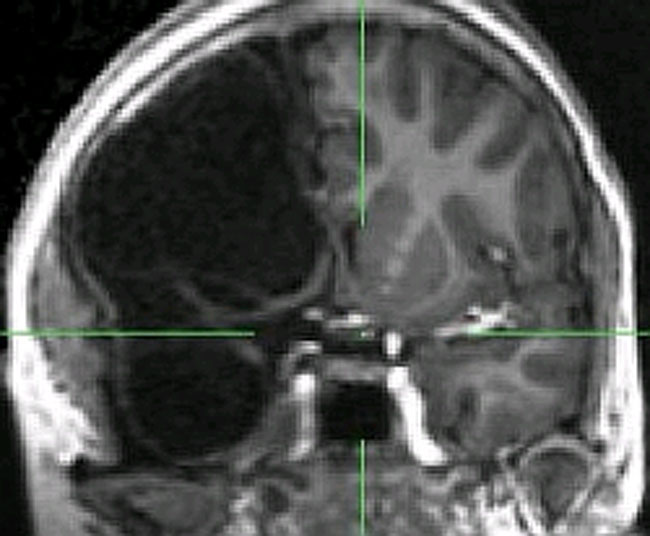Girl Sees Fine With Half a Brain

A 10-year-old girl from Germany has had quite a normal life despite the fact that she was born with only half her brain. Even more surprising, she has almost perfect vision in one of her eyes. Now, scientists have figured out why. The girl's brain rewired itself — likely in the womb — so that it's able to process information from both the right and left fields of vision even though she is missing the right brain hemisphere, which failed to develop while she was in the womb. The child's case is the only one of its kind known in the world, researchers said. Usually, a person's left and right visual fields are processed by opposite sides of the brain — the left hemisphere handles the right field of vision and the right hemisphere takes care of the left field of vision. But functional magnetic resonance imaging (fMRI) scans of the girl's brain showed that the retinal nerve fibers which should have gone to the right side of her brain instead rerouted to the left. Also, the scans revealed that the visual cortex on the left side of her brain, which maps out the right field of vision, contained "islands" to deal with the left visual field. “The brain has amazing plasticity but we were quite astonished to see just how well the single hemisphere of the brain in this girl has adapted to compensate for the missing half," Dr. Lars Muckli, a researcher from the Center for Cognitive Neuroimaging at the University of Glasgow, said in a statement. When the girl, a German who has not been named by researchers, was three years old, she underwent an MRI scan after suffering seizures and twitching on her left side, and she was found to have an underdeveloped brain. Her seizures have since been successfully treated, and she has had an almost normal developmental and medical history, attending regular school and taking part in activities such as roller-skating. "Despite lacking one hemisphere, the girl has normal psychological function and is perfectly capable of living a normal and fulfilling life. She is witty, charming and intelligent," said Muckli. When patients have half of their brain removed to treat epilepsy, they lose one field of vision in both of their eyes, meaning they see only objects on the left or right side of their vision. But the German girl's case is unique because she can see both left and right visual fields in one eye. Each of your eyes sends visual information to two parts of your brain through two different nerve fibers. The nerve fiber closest to your nose is called the nasal retina, and the nerve fiber by your temples is called the temporal retina. Normally, the nerve fibers from the nasal retina cross over in a section of the brain called the optic chiasma, so they are processed by the opposite hemisphere. On the other hand, the nerve fibers form the temporal retina stay in the same hemisphere. This set up causes the left and right visual fields to be processed by opposite sides of the brain. For instance, in your left eye, visual signals from your left field of vision will be sent to the right side of your brain via the nasal retina, while visual signals from your right field of vision will be processed by the left side of your brain via the temporal nerve. But in the girl's case, the left nasal retina nerve connected to the left brain hemisphere. The researchers think that the girl's right brain hemisphere stopped developing early in the womb, and that when the optic nerves reached the optic chiasma, the chemical cues that would normally guide the left eye nasal retinal nerve to the right hemisphere were not present, so the nerve was drawn to the left. If this is indeed the case, it would mean that there are no molecular repressors to prevent the nasal retinal nerve fibers from entering the same hemisphere. Dr. Muckli led the study and collaborated with colleagues from the Institute of Medical Psychology at Goethe University, Germany. The results were published online in the Proceedings of the National Academy of Sciences on July 20.
- How the Human Eye Works
- Greatest Mysteries: How Does the Brain Work?
- Bionic Humans: Top 10 Technologies
Get the world’s most fascinating discoveries delivered straight to your inbox.



